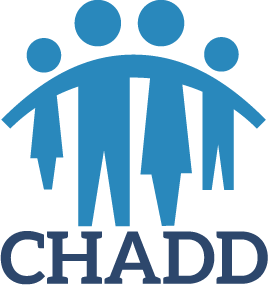What If I’d Been Diagnosed Sooner?
Attention Magazine August 2019
 PART OF MY ROLE AS A PSYCHOLOGIST is to complete ADHD-focused evaluations for adults. Clients often come to me after their children are diagnosed, and the child’s psychiatrist or psychotherapist recommends that the parent also complete an evaluation. During an initial visit, we review current symptoms, history of those symptoms, other mental health concerns like depression or anxiety, developmental and school history, family health history, occupational history, legal history, financial history, and medical history. Clients also complete rating scales and computer-based tasks to help me determine the severity of their concerns related to inattention, sustained attention, impulsivity, and other problems. I also ask family members or friends to complete rating scales or tell me about the client themselves. Then clients return for feedback about the diagnosis as well as recommendations for their treatment plan.
PART OF MY ROLE AS A PSYCHOLOGIST is to complete ADHD-focused evaluations for adults. Clients often come to me after their children are diagnosed, and the child’s psychiatrist or psychotherapist recommends that the parent also complete an evaluation. During an initial visit, we review current symptoms, history of those symptoms, other mental health concerns like depression or anxiety, developmental and school history, family health history, occupational history, legal history, financial history, and medical history. Clients also complete rating scales and computer-based tasks to help me determine the severity of their concerns related to inattention, sustained attention, impulsivity, and other problems. I also ask family members or friends to complete rating scales or tell me about the client themselves. Then clients return for feedback about the diagnosis as well as recommendations for their treatment plan.
Last week I completed an evaluation for a 36-year-old man with three children. He shared with me that he tried to talk about his struggles with focus and attention when he was in middle school and high school. One of his teachers was receptive to his concerns, but his parents told him he needed to “just try harder.” He was viewed by family and friends as “too social,” “goofy,” and “lazy.” “Life doesn’t just hand things to you,” they said. He didn’t talk about the possibility of having ADHD for more than twenty years until his primary care provider initiated the conversation. His doctor gave him a screening tool and then referred him to me for an evaluation.
Based on my assessment, he met criteria for the predominantly inattentive presentation of ADHD as well as moderate and generalized anxiety disorder. At the end of our appointment, he asked the question that I’ve heard hundreds of times during my feedback or recommendation visits: “What if I would have been diagnosed sooner?”
There are so many emotions behind these eight words—relief, joy, anger, frustration, sadness, comfort. And the cognitive-behaviorist in me can’t help but search for the thoughts behind these emotions. Some thoughts bring relief, a sense of peace, or even happiness: “Maybe things can get better now,” “Maybe things will be a little easier at home and work,” “I’m glad it’s not me just not trying hard enough.” Other thoughts fuel less pleasant emotions: “Life would have been easier for me,” “I would have gotten that promotion,” “I would have done better in school,” “My spouse would have understood me better,” “Why didn’t someone help me sooner?” Then, the question “What if I would have been diagnosed sooner?” is followed with “What do I do with all these thoughts now?”
My response is usually a simple one, but hopefully also a helpful one. After meeting with clients for such a short time, I am sure I know very little about the very personal and very real struggles they’ve encountered academically, socially, and occupationally in their daily lives—and I tell them that. I also try to reiterate how genuinely difficult some of the situations they’ve encountered must have been for them. Then, I share that despite what has happened in the past, this might actually be a helpful time in their lives to receive this information and get the question answered that they’ve probably wondered about for years.
Understanding ADHD
If the client in the example pursued a diagnosis thirty or even twenty years ago, it’s possible that he could have received a wide range of responses regarding the reasons for his attention concerns. It was a common misconception until the mid-1990s (and beyond) that ADHD was a childhood disorder; children would simply “outgrow” or mature out of these symptoms by adolescence (Wilens, Biederman, & Spencer, 2002). However, formal recognition of adult ADHD in the Diagnostic and Statistical Manual of Mental Disorders , Fourth Edition (DSM-IV, 1994) as well as ongoing research continues to indicate that symptoms largely persist into adulthood for both men and women with prevalence rates as high as 85-90% (Ramsay, 2007; Spencer, Biederman, Wilens, & Faraone, 2002).
Some of the strongest features of ADHD in adults are related to disorganization, distractibility, and impulsivity (Wilens et al., 2002). With this improved understanding of ADHD symptomatology, mental health providers and researchers have linked childhood impairment in school performance and social connections to higher rates of occupational problems, marital problems, impulsive financial decisions, and increased motor vehicle accidents in adulthood (Adler & Chua, 2002). Therefore, it has become increasingly important for clinicians to review these domains of functioning with their adult clients. Improved understanding of genetic links to ADHD has also highlighted the importance for clinicians to discuss the physical and mental health of the client’s family members when reviewing health history (Sprich et al., 2000).
Beyond the client’s self-reported history, measures and tools used by psychologists and other mental health providers can assist in differentiating symptoms that are related to ADHD versus other concerns like depression, anxiety, and substance use disorders (Grogan et al., 2018; Matthies et al., 2018). Completing these comprehensive evaluations gives clinicians added confidence that ADHD is the best-fitting diagnosis and can better shape the treatment plan (Uchida et al., 2015).
Accurate diagnoses will help guide clinicians and clients to helpful and effective treatment resources. For adults, common medication management includes both stimulant and nonstimulant options, which are typically prescribed by a primary care provider or psychiatrist (Adler & Chua, 2002; Lensing et al., 2015). Non-medication interventions like cognitive-behavioral therapy are also effective. In this treatment, the clinician and client work together to help the client understand how his or her brain “works,” and understand challenges faced in different settings (work, school, home). They can also work together to modify thought patterns, such as self-defeating core beliefs or negative/pessimistic outlooks on the future. Changing behaviors and developing coping strategies related to organization skills, time management, tolerance of boredom, and starting and completing tasks in a way that helps clients approach rather than avoid these challenges can also be beneficial (Ramsay, 2007).
My hope is that all of my clients will continue to access the strength it took to pursue the evaluation, and use it to follow the best interventions for their lives.
What should I do if I think I have ADHD?
If you think you have ADHD, there are many resources to help you determine the answer to this question. You can contact your primary care provider, who may refer you to a behavioral health expert such as a psychiatrist or a psychologist. You can also contact a behavioral health provider directly. These providers will likely ask you many of the questions reviewed at the beginning of this article.
Additional resources regarding contact information for providers as well as other support can be found at CHADD’s website (www.chadd.org or www.help4adhd.org) or by searching for “ADHD” on the National Institute of Mental Health website (www.nimh.nih.gov).
Katherine Frost, PhD, is a licensed clinical psychologist who works for ProHealth Care Medical Group in southeastern Wisconsin. She received her degree from Marquette University and has devoted a significant portion of her practice over the past four years to ADHD-focused psychological evaluations for adults. She also practices skills training and psychotherapy for adults with ADHD. She enjoys consulting with psychotherapists, psychiatrists, and other medical providers in this healthcare system to meet the needs of the patient population regarding these services.
ADDITIONAL READING
Hallowell EM, & Ratey, JJ. (2005). Delivered from Distraction: Getting the Most Out of Life with Attention Deficit Disorder. New York, NY: Ballantine Books.
Safren SA, Perlman CA, Sprich S, & Otto MW. (2005). Mastering Your Adult ADHD: A Cognitive-Behavioral Treatment Program (Therapist Guide). New York, NY: Oxford.
REFERENCES
Adler LA & Chua HC. (2002) Management of ADHD in Adults. Journal of Clinical Psychiatry, 63, 29-35.
Grogan K, Gormley CL, Rooney B, Whelan R, Kiiski H, Naughton M, & Bramham J (2018). Differential diagnosis and comorbidity of ADHD and anxiety in adults. British Journal of Clinical Psychology, 57, 99-115.
Lensing MB, Zeiner P, Sandvik L, & Opjordsmoen,S. (2015). Psychopharmacological treatment of ADHD in adults aged 50+: An empirical study. Journal of Attention Disorders, 19, 380-389.
Matthies S, Sadohara-Bannwarth C, Lehnhart S, Shulte-Maeter J, & Philipsen A. (2018). The impact of depressive symptoms and traumatic experiences on quality of life in adults with ADHD. Journal of Attention Disorders, 22, 486-496.
Ramsay JR. (2007). Current status of cognitive-behavioral therapy as a psychosocial treatment for adult Attention-deficit/Hyperactivity Disorder. Current Psychiatry Reports, 9, 427-433.
Spencer TJ, Biederman J, Wilens TE, & Faraone SV. (2002) Overview and neurobiology of Attention-deficit/Hyperactivity disorder. Journal of Clinical Psychiatry, 63, 3-9.
Sprich S, Biederman J, Crawford MH, Mundy E, & Faraone SV. (2000) Adoptive and biological families of children and adolescents with ADHD. Journal of the American Academy of Child & Adolescent Psychiatry, 39, 1432-1437.
Uchida M, Spencer TJ, Faraone SV, & Biederman J. (2018). Adult outcome of ADHD: An overview of results from the MGH longitudinal family studies of pediatrically and psychiatrically referred youth with and without ADHD of both sexes. Journal of Attention Disorders, 22, 523-534.
Wilens TE, Biederman J, & Spencer TJ. (2002) Attention deficit/Hyperactivity disorder across the lifespan. Annual Review of Medicine, 53, 113-131.



